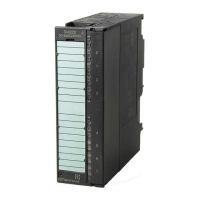Diagnostics and upkeep
7.3 SINAUT diagnostics and service tool
TIM DNP3
System Manual, 12/2015, C79000-G8976-C253-04
257
●
no. of prio. messages
:
Number of stored messages to be sent with high priority (not relevant for DNP3).
●
Status:
The status is a hexadecimal value that codes the buffer information following it into
binary.
●
Forced image mode
:
If events are not sent unsolicited, all events are processed in forced image mode
●
data brake
:
The sending of messages to the remote partner is currently disabled either because the
remote partner is unavailable or there is a lack of memory on the remote partner (not
relevant for DNP3).
●
blocked:
Reserved for future functions. Nothing is currently displayed.
●
Overflow warning:
If more than 90% of the event buffer is occupied, an overflow warning is set.
●
XGA:
Reserved for future functions. Nothing is currently displayed.
●
uncond. messages:
Reserved for future functions. Nothing is currently displayed.
The
Communication
tab displays information on the status of communication of the TIM with
information on interfaces, drivers (available/not available) and baud rate. The data is
displayed in the lower part of the dialog when you select one of the communication
interfaces.
The
Time Synchronization
tab displays information on the time synchronization on the
various interfaces of the TIM with information on the interface, synchronization and status of
time synchronization. The information is displayed in the lower part of the dialog when you
select one of the communication interfaces.
The
Time
tab displays the data and current module time of the TIM on the left in the
Current
time
area.
On the right in the
Clock status
area, information on the validity of the time, daylight
saving/standard time and the changeover from daylight saving to standard time is displayed.
If the " Time is valid" option is set, the time was set by one of the connected DNP3 master
stations. The DNP3 protocol uses Greenwich Mean Time or UTC. There is no distinction
between standard and daylight saving time at the protocol level. The "Standard time" entry is
always set.

